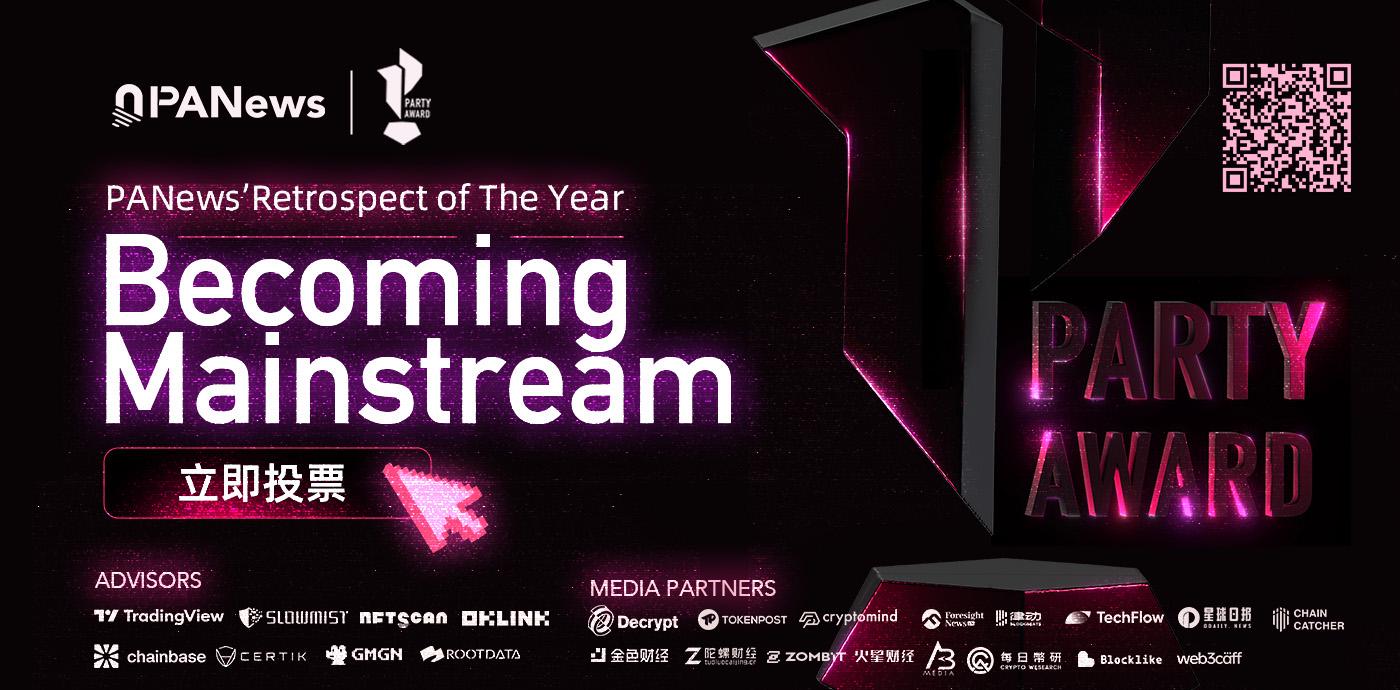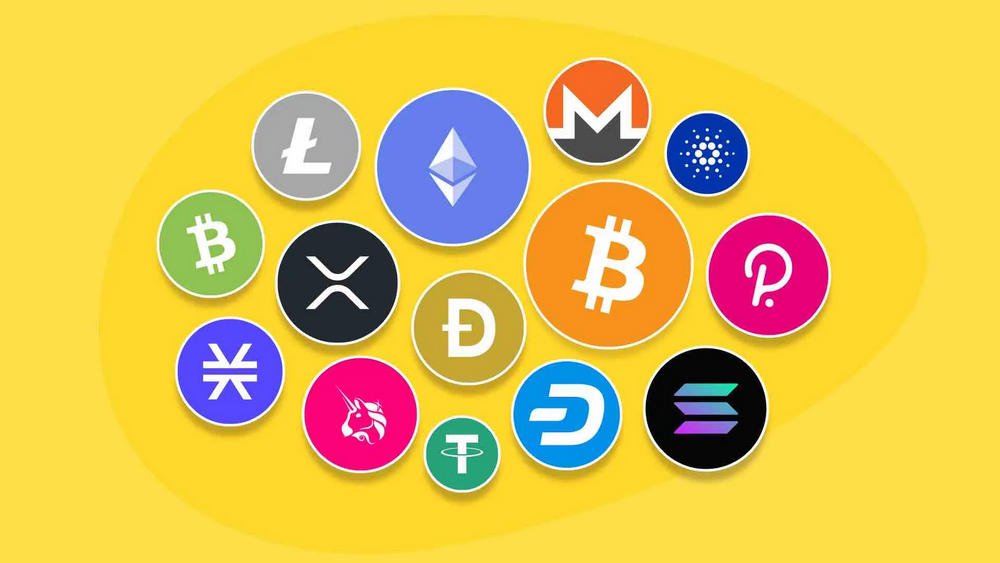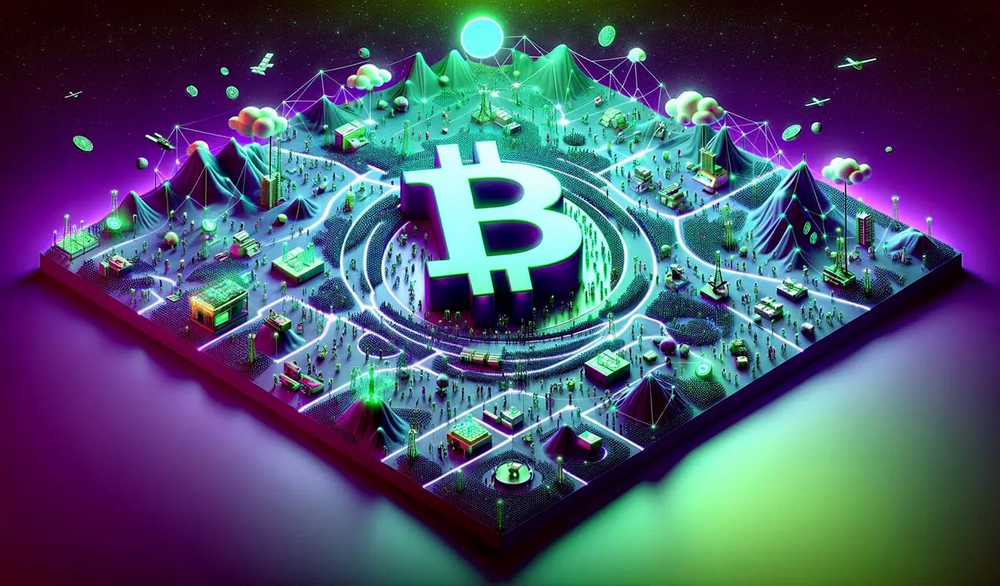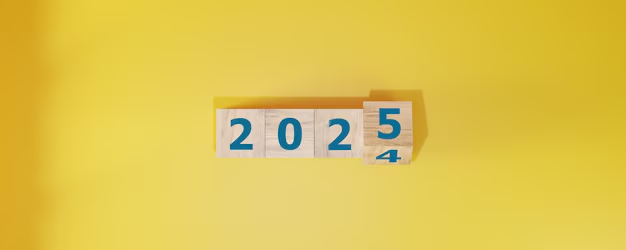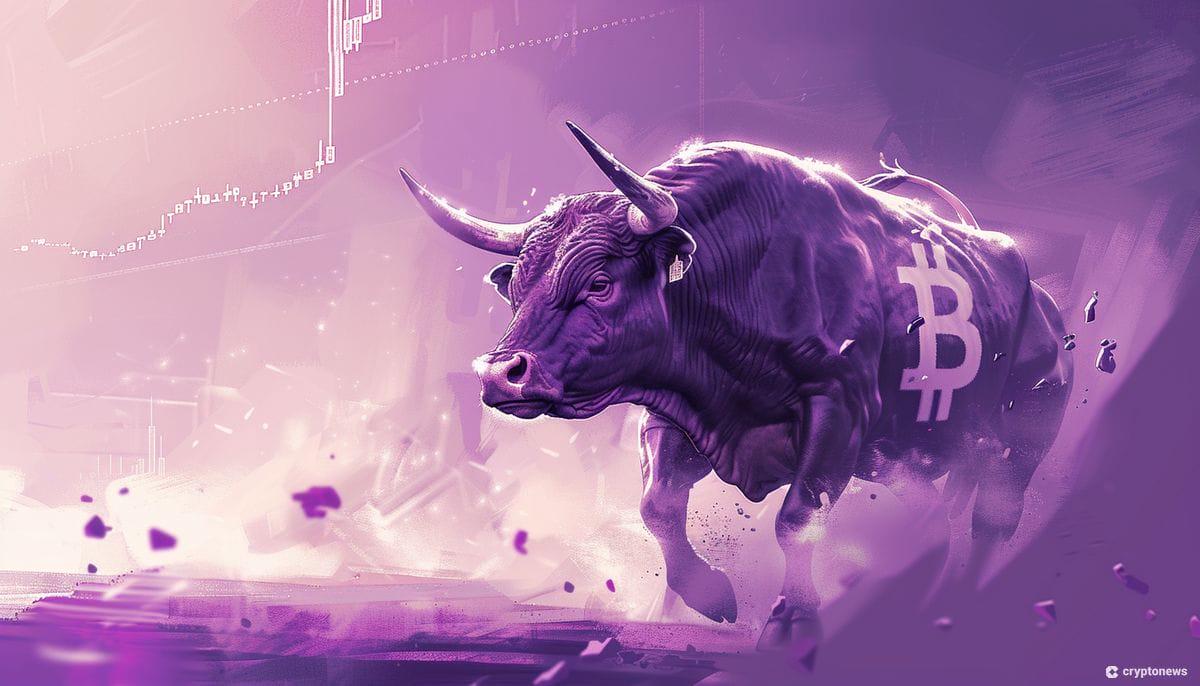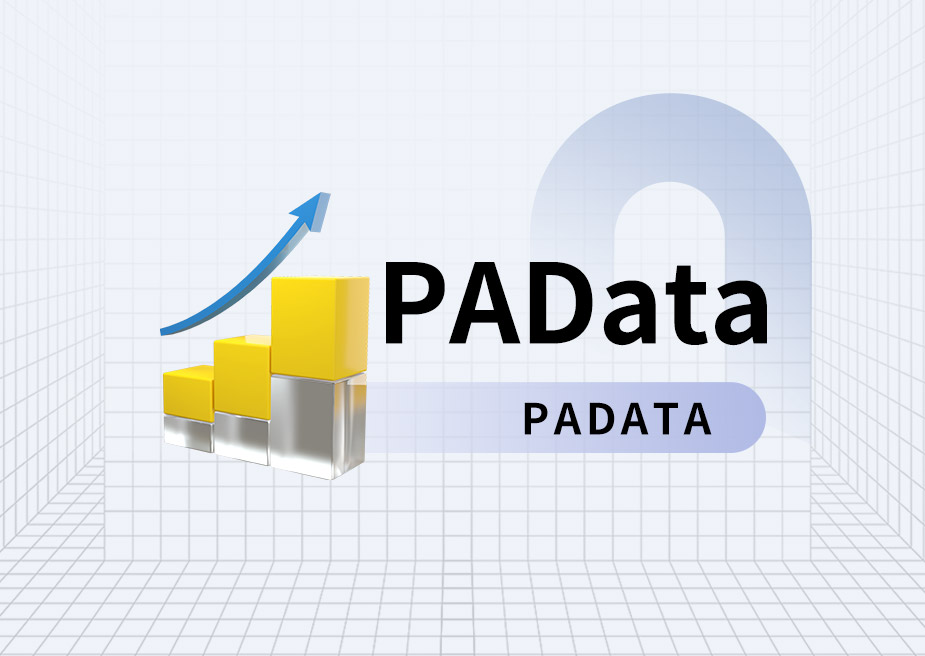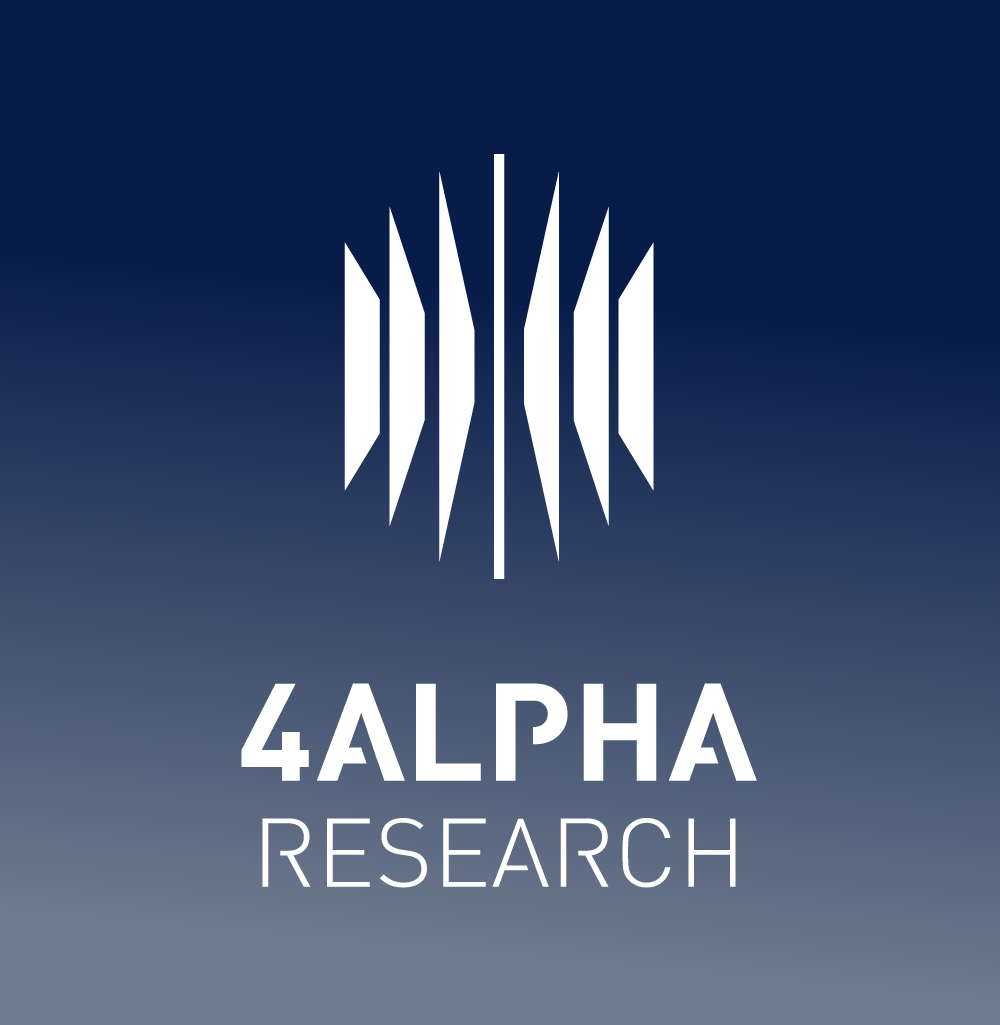-
 PA一线 · 5分前
分散型流動性プロトコル THORChain が V3 バージョンをリリース
PA一线 · 5分前
分散型流動性プロトコル THORChain が V3 バージョンをリリース分散型流動性プロトコル THORChain の V3 バージョンがリリースされました。このアップデートでは、Cosmos SDK v0.50 へのアップグレード、Tendermint から CometBFT への切り替え、Cosmos エコシステム互換性の導入、Rujira アプリケーション層への参加など、高度な相互運用性とスマート コントラクト機能が提供されます。
-
 PA一线 · 1時間前
資産管理会社GraniteSharesはMicroStrategyやRobinhoodなどの企業を追跡するために暗号通貨関連のレバレッジETFを申請
PA一线 · 1時間前
資産管理会社GraniteSharesはMicroStrategyやRobinhoodなどの企業を追跡するために暗号通貨関連のレバレッジETFを申請ニューヨークに拠点を置き、運用資産総額100億ドルを超える資産管理会社GraniteSharesは、Riot Platforms、Marathon Digital、MicroStrategy、Robinhoodなどの企業を追跡するための新しいレバレッジETFを申請した。これらの資金はロングとショートの両方になります。 2 倍のロング ETF は、対応する株式の 1 日当たりのリターンの 2 倍を生み出します。
-
 深潮TechFlow · 1時間前
オンチェーンユーザーに関する年次報告書: 月間新規ユーザー数は最大1,940万人に達し、Baseチェーンが増加の70%近くに貢献
深潮TechFlow · 1時間前
オンチェーンユーザーに関する年次報告書: 月間新規ユーザー数は最大1,940万人に達し、Baseチェーンが増加の70%近くに貢献一般ユーザーを価値の高い貢献者に変えるという点では、ほとんどのブロックチェーンはまだ初期段階にあります。
-
 PA一线 · 1時間前
あるクジラ/機関は昨夜以来約127万EIGENを換金し、チェーン上で販売した
PA一线 · 1時間前
あるクジラ/機関は昨夜以来約127万EIGENを換金し、チェーン上で販売した昨夜7時以来、彼らは4つのアドレスにEigenLayerプレッジ契約から1,270,507 EIGEN(502万米ドル)を引き換えさせ、ETHまたはUSDCとチェーン上で販売しています。 EIGEN は償還され、4 つの住所に販売されました。数日前、EIGEN が最高値 5.6 ドルに達したとき、891 万 7000 EIGEN は 1765 万ドルの利益を上げました。しかし現在はコストライン付近まで下落している。
 白话区块链 · 2時間前
暗号通貨取引における心理的側面: なぜマインドセットがそれほど重要なのでしょうか?
白话区块链 · 2時間前
暗号通貨取引における心理的側面: なぜマインドセットがそれほど重要なのでしょうか?心理的ゲートは仮想通貨取引において重要な役割を果たします。トレーダーはラウンドナンバーの価格ポイントに関して感情的な決定を下すことが多く、これらのゲートの反応は市場のボラティリティと価格の動きに影響を与える可能性があります。
-
 PA一线 · 2時間前
調査: ブロックチェーンと暗号通貨技術の国ランキングでシンガポールがトップ、米国が第5位
PA一线 · 2時間前
調査: ブロックチェーンと暗号通貨技術の国ランキングでシンガポールがトップ、米国が第5位ApeX による最近の調査では、ブロックチェーンと暗号通貨技術のトップ 10 先進国がリストされており、シンガポールがリストのトップとなっています。この調査では、ブロックチェーンの特許、ブロックチェーン技術の雇用、仮想通貨取引所の数という3つの主要指標を通じてブロックチェーンの開発と導入を反映する複合指数を使用して各国を評価した。
-
 PA一线 · 3時間前
今週、NFT取引量は前月比32.93%増の3億220万米ドルとなり、購入者数は前月比92.39%増となりました。
PA一线 · 3時間前
今週、NFT取引量は前月比32.93%増の3億220万米ドルとなり、購入者数は前月比92.39%増となりました。イーサリアムネットワークのNFT取引額は1億9990万ドルに急増した。過去7日間で73.56%上昇した。ビットコインネットワークNFTが2位となり、取引高は23%減の3,970万ドルとなった。しかし、ネットワーク上のユーザーエンゲージメントは順調に伸びており、購入者数は 38,987 人に達しました。 Solana ネットワークは、前月比 5.14% 増の 2,990 万ドルの取引量と、前月比 108.45% 増の合計 104,958 人の購入者により 3 位の地位を固めました。
-
 PA一线 · 3時間前
アーサー・ヘイズ氏がバイナンスから785万USDCを引き出し、昨日バイナンスに送金される予定だった700万ENAが売却された
PA一线 · 3時間前
アーサー・ヘイズ氏がバイナンスから785万USDCを引き出し、昨日バイナンスに送金される予定だった700万ENAが売却されたオンチェーンアナリストのエンバー氏は、約30分前にアーサー・ヘイズ氏がバイナンスからアドレス785万USDCを引き出したことを監視しており、昨夜バイナンスに転送された700万ENAは平均価格1.12ドルで売却されたと推定されている。
-
 PA一线 · 3時間前
ロイター:米国はビットメインと関連するAI企業ソフゴをブラックリストに掲載する計画
PA一线 · 3時間前
ロイター:米国はビットメインと関連するAI企業ソフゴをブラックリストに掲載する計画ロイター通信が関係者の話として報じたところによると、バイデン政権は、同社のTSMC製チップがファーウェイの人工知能プロセッサに違法に組み込まれていたとして、ビットメイン傘下の人工知能企業ソフゴを米商務省の制限貿易リストに追加する予定だという。
-
 PA一线 · 3時間前
エルサルバドル大統領は、追加で20,000コインを購入するという中期目標を掲げ、毎日のビットコイン購入量を増やした
PA一线 · 3時間前
エルサルバドル大統領は、追加で20,000コインを購入するという中期目標を掲げ、毎日のビットコイン購入量を増やしたエルサルバドル大統領の上級ビットコイン顧問マックス・カイザー氏は、ブケレ大統領が毎日のビットコイン購入量を増やしており、追加の2万ビットコインを購入するという中期目標を掲げていると述べた。
- 暗号通貨の流動時価総額(7日間)$3,541,763,733,716Market Cap恐怖・貪欲指数(過去30日間)
 PA一线 · 4時間前
EIP-1559が有効化されて以来、450万以上のETHが破壊されました
PA一线 · 4時間前
EIP-1559が有効化されて以来、450万以上のETHが破壊されましたEIP-1559の発動以来、153億ドル以上に相当する4,523,479.74 ETHが永久に破壊されました。オンチェーン転送は総イーサ消費量の約 8.17% を占め、Opensea NFT は総イーサ消費量の約 5.08% を占めました。分散型取引所(dex)プラットフォームUniswapは225,723.78 ETHを破壊し、破壊されたETHの総量の4.99%を占めました。同時に、イーサリアムネットワーク上のテザー(USDT)トランザクションにより、205,458.95 ETHが破壊され、破壊されたETHの総量の4.54%を占めました。現在、ネットワークのインフレ率は0.820%と控えめで、ハードフォーク以降、さらに3,245,017.99ETHが流通しています。
-
 PA一线 · 4時間前
Microstrategy、元Binance.US CEOを含む3人の新しい取締役を追加
PA一线 · 4時間前
Microstrategy、元Binance.US CEOを含む3人の新しい取締役を追加最新の提出書類によると、マイクロストラテジーはナスダック100株価指数に追加される直前に取締役会に3人のメンバーを追加し、合計9人となった。文書によると、新しい取締役会メンバーにはブライアン・ブルックス氏、ジェーン・ディーツェ氏、グレッグ・ウィニアルスキー氏が含まれており、全員がデジタル資産を扱う大企業で働いた経験がある。各取締役は200万ドル相当の株式を受け取り、その半分はオプション、残りの半分は4年間で権利確定するRSUとなる。
-
 Foresight Ventures · 4時間前
知的財産権に特化した L1 ブロックチェーンストーリーの包括的な解釈
Foresight Ventures · 4時間前
知的財産権に特化した L1 ブロックチェーンストーリーの包括的な解釈「AI アプリケーションを活用するには、ストーリーが最適な選択となるでしょう。」
-
 PA一线 · 18時間前
分析:コミュニティは、トランプ大統領の就任式当日にビットコインが「神のろうそく」のような傾向になるのではないかと懸念している
PA一线 · 18時間前
分析:コミュニティは、トランプ大統領の就任式当日にビットコインが「神のろうそく」のような傾向になるのではないかと懸念しているPANews、12月21日、News.bitcoinによると、ここ数日の米国政府機関の閉鎖と同じくらい予測不可能な状況が続いており、支出交渉の行き詰まりにより米国政府が閉鎖されようとしているというニュースがある。歴史的に見ても前例のない状況が市場にさまざまな影響を及ぼします。市場参加者が短期的な期待に幻滅する中、アーサー氏はヘイズ氏は、仮想通貨市場はトランプ大統領の就任式当日に「悲惨な下落」が見られるだろうと信じているが、仮想通貨コミュニティは、トランプ大統領の就任式が伝説的な「ゴッド・キャンドル」トレンドを引き起こすのではないかと固唾を飲んで見守っている(注:ゴッド・キャンドルとは、2016年に価格が急騰したことを指す)ある日、価格変動チャートに週間トレンドを作成する(副次的活動によって覆い隠される)つまり、米国が2025年の予算問題を解決し、トランプ大統領がビットコインに焦点を当てた複数の戦略を実行した場合、現在の市場低迷は一時的な小康状態、より大きな強気サイクルにおける弱気局面に過ぎないことを意味する 市場を活性化するために、ビットコインは可能性がある大幅な回復が見られます。
-
 PA一线 · 18時間前
来週のマクロ見通し:クリスマスシーズンは危機に満ちている可能性、市場変動を増幅させる流動性不足に注意
PA一线 · 18時間前
来週のマクロ見通し:クリスマスシーズンは危機に満ちている可能性、市場変動を増幅させる流動性不足に注意PAニュースは12月21日、今週ついにFRBが市場が長年期待していた「転換」を確認したと報じ、今週の中央銀行の声明と経済見通しの更新は市場に大きな影響を与えた。市場参加者は現在、連邦準備理事会(FRB)が2025年12月までに約40ベーシスポイント利下げすると予想しており、これに応じて米国債利回りも上昇している。今週初め、ビットコインは欧州市場で最高値から下落し、一時は9万5000米ドルに近づき、今ラウンドでは10万8000米ドルを超える史上最高値を更新したばかりだった。通貨サークルの下落は、イーサリアムやドージコインなどのアルトコインに対してさらに大きな打撃を受けています。
-
 PA一线 · 18時間前
Jump Tradingの子会社Tai Mo Shan Ltdは米国SECに1億2,300万米ドルの和解金を支払う予定
PA一线 · 18時間前
Jump Tradingの子会社Tai Mo Shan Ltdは米国SECに1億2,300万米ドルの和解金を支払う予定PANewsは12月21日、ジャンプ・トレーディングの子会社であるTai Mo Shan Ltd.が、TerraUSDの和解中に投資家が誤解されたという主張を解決するために、米国証券取引委員会に1億2,300万ドルの和解金を支払う予定であると報じた。同社はTerraUSDの暴落中に、ステーブルコインの1米ドルペッグをサポートするために大量の購入を行ったと報告されており、市場詐欺の疑いがある。
-
 PA日报 · 19時間前
PA Daily | 暗号通貨の「皇帝」デイビッド・サックスは、テザーがビデオ共有プラットフォームのランブルに7億7,500万ドルを戦略的に投資していることを否定。
PA日报 · 19時間前
PA Daily | 暗号通貨の「皇帝」デイビッド・サックスは、テザーがビデオ共有プラットフォームのランブルに7億7,500万ドルを戦略的に投資していることを否定。Jump Tradingの子会社であるTai Mo Shanは、米国SECとの和解に約1億2,300万米ドルを支払うことに同意し、Coinbase、Kraken、Rippleなどの仮想通貨機関がトランプ大統領の発足したL2ネットワークUnichainメインネットに寄付されると発表した。来年初めにはオンライン化される予定だ。
-
 PA一线 · 19時間前
フィナンシャル・タイムズ:ブレバン・ハワードやギャラクシー・デジタルなどの仮想通貨ファンドは、従来のファンドをはるかに上回る年間収益を上げている
PA一线 · 19時間前
フィナンシャル・タイムズ:ブレバン・ハワードやギャラクシー・デジタルなどの仮想通貨ファンドは、従来のファンドをはるかに上回る年間収益を上げているPANewsは12月21日、イギリスの「フィナンシャル・タイムズ」紙の報道によると、データプロバイダーのヘッジファンド・リサーチが開示したデータによると、トランプ大統領の勝利によりビットコインが大幅に反発し、一部の仮想通貨ヘッジファンドが「大儲け」できるようになったと報じた。暗号戦略を使用したファンドは11月に46%増加し、これらのファンド会社の年間リターンは業界平均(11月は10%)をはるかに上回りました。
-
 PA一线 · 19時間前
昨日、イーサリアムスポットETFは7511万5900ドルの純流出となり、ETFの純資産比率は2.93%に達した
PA一线 · 19時間前
昨日、イーサリアムスポットETFは7511万5900ドルの純流出となり、ETFの純資産比率は2.93%に達した昨日、グレイスケール イーサリアム トラスト ETF ETHE への 1 日の純流入額は 75 億 5,500 万米ドルで、ETHE の現在の過去の純流出額は 36 億 1,700 万米ドルです。 Grayscale Ethereum Mini Trust ETF ETH の 1 日の純流入額は 810 億 4,700 万米ドルであり、Grayscale Ethereum Mini Trust ETH の現在の過去の純流入総額は 6 億 500 万米ドルです。昨日、1日の純流入額が最も大きかったイーサリアムスポットETFはフィデリティETF FETHで、1日の純流入額は1,295万1,300ドルで、FETHの現在の歴史的な純流入額は14億5,000万ドルに達しました。グレイスケール ETF ETH が続き、1 日の純流入額は 810 万 4,700 米ドルで、現在の ETH の過去の純流入総額は 6 億 5,000 米ドルに達しました。
-
 PA一线 · 19時間前
昨日、ビットコインスポットETFは2億7,700万米ドルの純流出を記録し、ETFの純資産比率は5.75%に達しました。
PA一线 · 19時間前
昨日、ビットコインスポットETFは2億7,700万米ドルの純流出を記録し、ETFの純資産比率は5.75%に達しました。グレイスケール ビットコイン ミニ トラスト ETF BTC の 1 日の純流入額は 640 万 7400 万米ドルであり、グレイスケール ビットコイン ミニ トラスト BTC の過去の純流入総額は 8 億 6,000 万米ドルです。これにフランクリン・テンプルトン(フランクリン)ETF EZBCが続き、1日の純流入額は561万3,600ドルとなり、EZBCの過去の純流入総額は4億6,700万ドルに達する。
続きを読む Dec . 22
Dec.22
